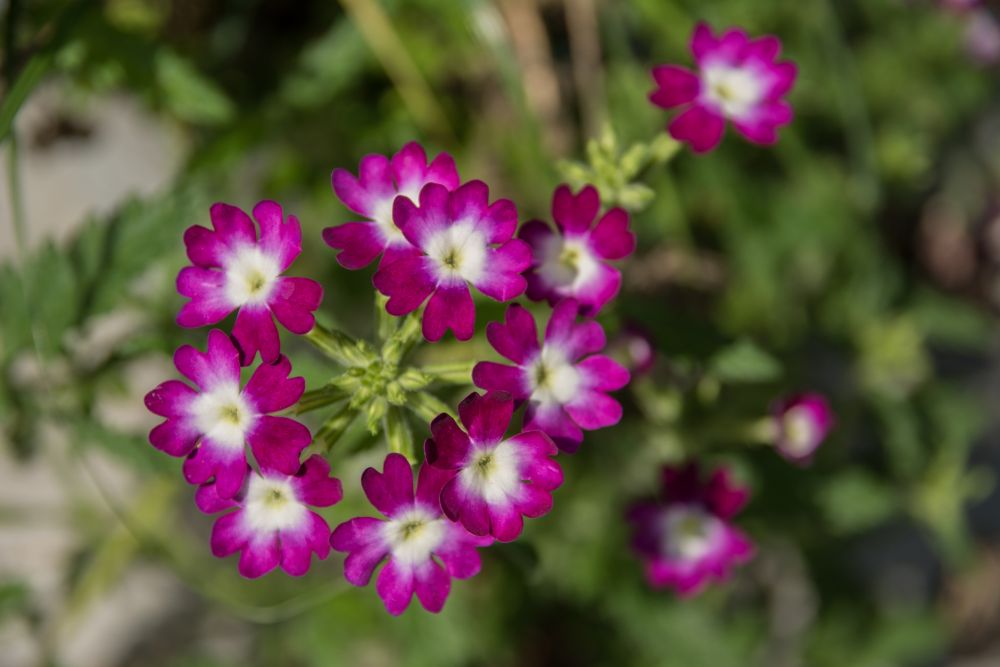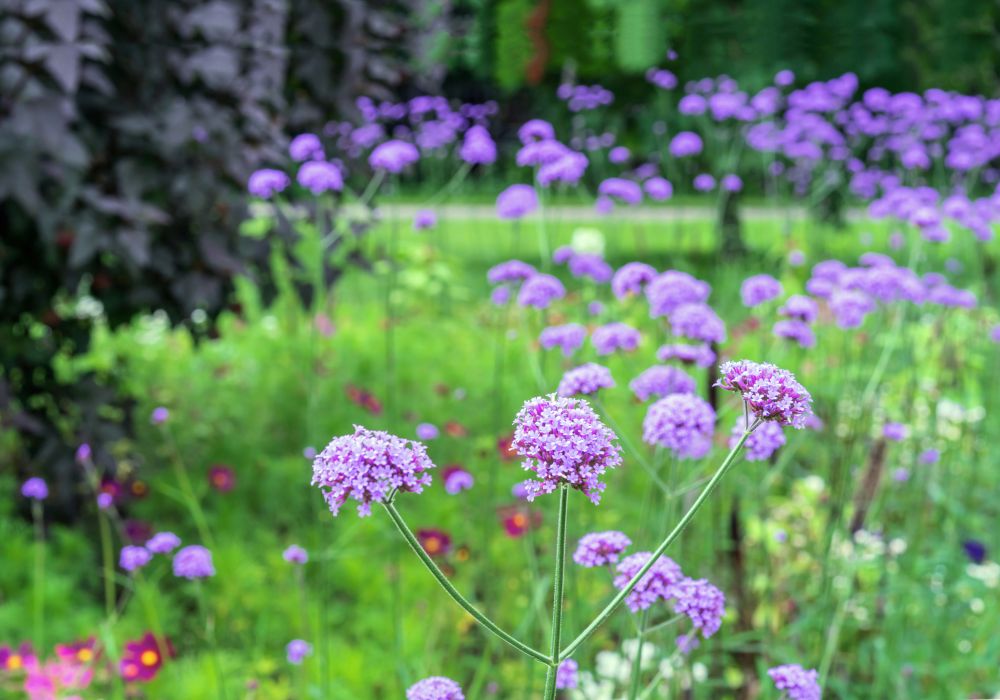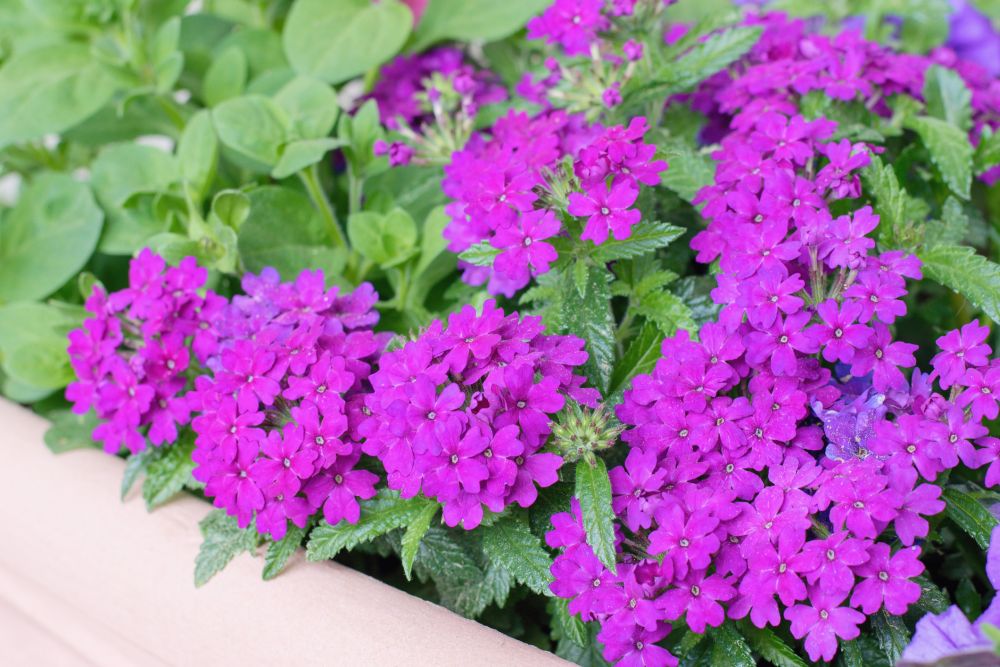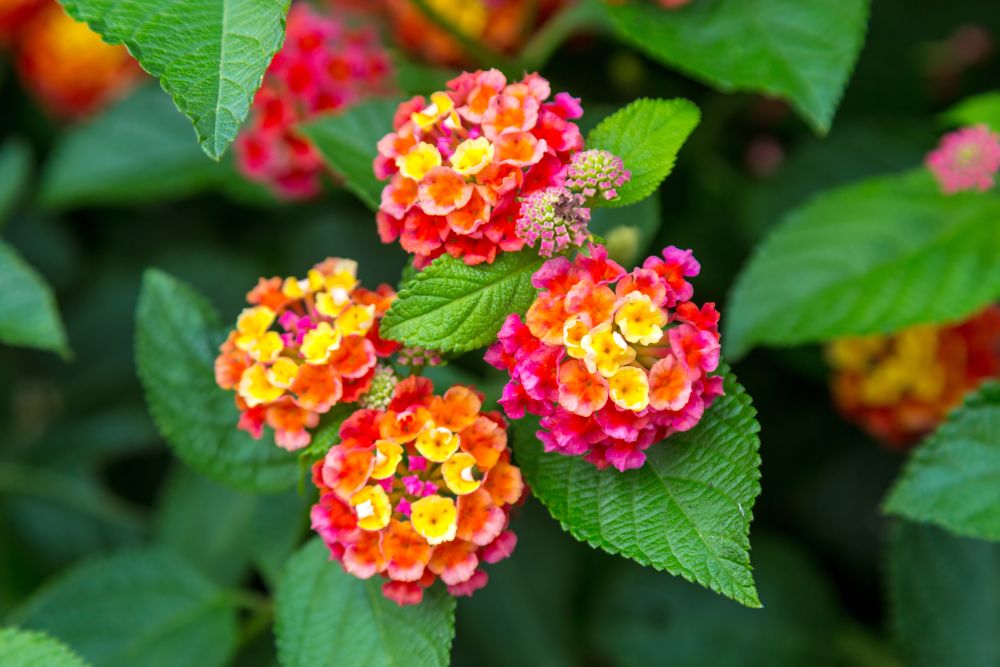How to Grow & Care for Verbena Plants
Verbena plants are a perfect option for blooms that look lofty and sublime inside hanging baskets. What most homeowners love about these flowering plants is their grand appearance and capacity to survive drought conditions. They can stay attractive for a period without showing any fussy traits.
Verbena is a fancy nickname that means “tears of Isis,” and while it’s native to America and Asia, the flower can be traced almost all over the world. Keep reading to learn the ins and outs of growing and caring for Verbena plants.
More About Verbena Plants
Verbena plants are commonly grown as perennials or annuals. There are over 250 perennial and annual species in the Verbena genus. They do well as hardy perennials, ideally under USDA hardiness zones 9 to 11. But in nearly all zones, they’re dominantly grown as annuals. And in most instances, they’re low growers and elongate in a trailing pattern. When growing inside hanging baskets, the foliage tends to resemble that of fern plants.
Low trailing plants are usually grown inside containers, while the broadest number of species is often used for borders in gardens. There are many hybrid crosses in the Verbena genus that actively bloom when provided with suitable growing conditions. For annual to sprout with ease, you’ll need to wait till the spring season after the frosting period is over. Depending on the variety you’re looking to grow, a mature Verbena will reach 12 inches tall and spread about 18 inches wide.
Favorite Verbena Types
- Brazilian Verbena (Verbena Brasiliensis): This type has straight but ductile branching stems that hold clusters of purple flowers from early summer till late fall. It’s predominantly used for bordering and self-propagates using seeds, so it’s pretty easy to treat it as an annual. Most gardeners, however, view this South American native as an invasive plant. The tubular flowers of this Verbena type are usually followed by tiny and indented leaves that make the foliage look overly appealing.
- White Vervain (Verbena Urticifolia): With an aptitude to produce dazzling-white blooms, this herbaceous perennial is among the popular types because it can survive for a year or two while growing outdoors, even under harsh conditions. It’s also commonly known as the nettle-leaved Verbena since the exterior texture, including that of the flower stalks, stems, and leaves, is covered by a layer of soft bristles. During early summer, you’ll likely see some spike-like blooms that later turn into bluish-white flowers.
- Mint Vervain (Verbena Menthifolia): The mint Vervain is native to northern Mexico and the southwestern part of the United States. It’s accustomed to dry conditions, and the stems can reach up to 30 inches tall when the perennial is mature. During the blooming season, the plant produces a few inflorescence flowers that grow in clusters and are slightly smaller than those of other popular types. It has hairy leaves held by thin but tall stems.
- Narrowleaf Vervain (Verbena Simplex): What makes this type more distinct from other Verbena plants is the narrow leaves, and the color of the blooms tends to resemble that of lavenders. It’s native to North America, prefers dry conditions, and grows best in calcium-rich soil. The strong winds during summer help this ecstatic perennial to self-propagate. Cultivating this type from seeds is one of the most economical options available.
How to Care for Verbena Plants
Flowering & Fragrance
If you’re growing an annual type, it’s no secret that the blooms will eventually die. But that’s not to mean that flowers from hardy perennials will stick around forever. The colors you’ll see on the blooms are white, pink, peach, purple, and red, depending on the type you’re looking to grow. These blooms are usually held by semi-woody stems that also have hairy-like leaves. Flowers typically emerge at the tip of the stem as thick spikes—each with about five bright petals.
Light & Temperature
Plant your Verbena under a sunny location. It needs enough bright light to bloom and have glorious foliage. Any intense heat would, however, ruin the flowers and cut back their average lifespan. If possible, place the growing medium somewhere to get at least 6 to 8 hours of light every day. Both hybrid annual and perennial Verbenas might experience leggy growth or produce few blooms when growing under excess shade.
Except for annuals, tender perennials should not be exposed to frost conditions. Annuals can survive through winter only when they are grown under semi-tropical temperatures. And if you’re looking to cultivate any hardy perennial species in the Verbena genus, the optimal range would be anywhere between 60 to 70 degrees Fahrenheit. It’s also worth noting that this hybrid, when cultivated, would do well under USDA Hardiness zones 9 to 11.
Soil Requirements
Most Verbenas commonly grown in households aren’t fussy about their soil requirements. They generally need a soil texture that drains water efficiently and doesn’t hold too much moisture. It should, however, retain some to help the plant have thicker and healthier roots. When growing outdoors, you want to space them out at least 10 inches apart and amend the nursery bed with compost manure, to enhance moisture retention and make the soil nutrient-rich. Avoid using clay soil since it doesn’t let water pass through with ease, leading to root rot.
Its dense texture also can’t allow nutrients to reach the roots. Instead, use standard potting soil and amend it with leaf mold to make it a bit lighter. You also want to make sure the ground has an acidic pH before planting. Perennials also do well in organic mulch, so throw in a layer that’s at least two or three inches thick. Sandy soil tends to drain moisture at a rapid pace but isn’t the best when it comes to retaining nutrients, so mulching would be a perfect idea, primarily if your Verbena type is growing outdoors for landscaping. After making all the suitable amendments, it’s best to run a soil test to tell which essential nutrients are missing.
Watering
These flowering perennials are sensitive to overwatering. And most newbie gardeners are often tempted to ignore the potential adverse effects of leaving this plant in soggy soil for too long. Too much moisture will lead to stem and root rot. To protect the lush foliage on your Verbenas, you need to moist them evenly, especially when they’re at their early sprouting stages. And once they’re mature, they’ll thrive with typical watering intervals and withstand temporary drought conditions. Before watering, carefully inspect your Verbena to check whether it’s thirsty or showing early signs of wilting.
Most mother species of the Verbena hybrids are native to Mediterranean regions; hence they’re accustomed to dry conditions. You, therefore, want to mimic their indigenous environment when calibrating the watering intervals. It’s also worth noting that prolonged drought conditions would create a perfect breeding ground for spider mites. Fungal diseases such as gray mold, or scientifically known as Botrytis blight, also tend to crop up due to overwatering.
Feeding
It’s typical for Verbenas to look wondrous throughout the growing seasons without feeding. But to make these hybrids produce flowers, you might want to use a slow-release and balanced fertilizer during the blooming season. On average, the blooms can last from spring till the frosting season. To accelerate blooming when the conditions are unfavorable, you might need to use a fertilizer with a higher phosphorus composition.
High amounts of potassium also help build sturdy roots. If you have some growing in garden beds, it’s much better to make the best use of organic matter since it poses nearly zero risks when used in moderation compared to synthetic fertilizers. Some of the organic options suitable for flowering perennials and hybrid annuals include fish emulsion and animal manure.
Grooming & Maintenance
Grooming these annuals isn’t a strenuous task. It would help if you learned how and when to deadhead flowers that appear to be fading to ensure that blooming survives the entire season. But for summer blooms, there won’t be any need for deadheading.
Your Verbenas will need to get trimmed every once in a while to maintain their shape and appearance. Get rid of any debris that settles on the edges of the growing medium to limit pests’ breeding chances. If growing outdoors, you also want to maintain a clean edge between the flower bed and your lawn.
How to Propagate Verbenas
You can propagate most Verbena types using stem cuttings or seeds. You need to prepare a potting mix or seed starting soil, then make amendments that would help with drainage and air circulation. Here’s how to use stem cuttings:
- Using a sterilized pair of scissors or knife, they said a few stem cuttings from the parent plant.
- You want to make sure they are at least three inches long.
- Get rid of any lower leaves on each stem cutting.
- Prepare the seed starter mix when growing outdoors or potting soil if you’re growing them inside hanging baskets. >
- Dig the planting holes at least 3 or 4 inches deep.
- Moisten the soil but be careful not to overwater the cuttings.
- If you’re planning to grow the cuttings indoors, cover the container using a plastic bag to help retain moisture.
- Within a few weeks, new growth should emerge. The roots will also have found, so you need to transplant the cuttings into bigger pots.
- Once two or three leaves are formed, move the containers of those so the plant can harden.
- Place the growing medium somewhere with enough bright light.
Growing Verbenas Using Seeds
Verbenas are also grown using seeds, but this might take a bit longer compared to stem cuttings. You can propagate these annuals with seeds using nursery seedling packs. Seeds are usually sold in gardening stores around spring. Self-propagation might also occur when seeds fall off from the parent plant. Here are the easy steps to follow when propagating using seeds:
- Soak the seeds in warm water. If they’re thin-skinned, 2 to 4 hours would be enough.
- Sow the seeds in sterilized soil. Garden soil tends to contain lots of weed seeds and perhaps harmful microorganisms. So, it’s best to purchase the potting soil at your nearest gardening store or prepare one yourself.
- Gently press the seeds in the potting mix and moisten the soil.
- You can amend the soil with peat moss to help balance the soil pH and retain nutrients.
- Most seed packets will have instructions on the label of the optimal planting depth you need to use.
- Keep the seed trays somewhere at room temperature.
- Seeds need some warmth to germinate. So, the air temperature needs not to be anything below 70 degrees Fahrenheit.
- Feed them only when a set of leaves have emerged. Wait till it’s the growing season—preferably around spring when the soil is a bit warmer and use liquid plant food at full strength at least once every week till it’s time for transplanting.
- Space the seedlings out so they can have enough air circulation.
- Hardening the seeds off would be needful since your Verbenas need to get acclimated to the harsh outdoor environment.
Overwintering Verbenas
During winter, you’ll need to protect your flowering perennials from frosting conditions. And it’s relatively easy to overwinter your Verbenas, especially if they’re potted. Those that aren’t potted have slim chances of surviving when the temperatures fall drastically. And the only route for saving them is uprooting right from the root balls, then transplanting them into containers so that they can grow indoors. Here are some of the pointers that will help you with overwintering:
- Trim the foliage to about half its size.
- Moisten the ground to make the whole uprooting exercise less burdensome. It also drastically lowers any friction that could damage the roots.
- Dig up the root balls and leave them outside to dry. Remove any dirt and split them in half.
- Look out for containers with ample space to accommodate any extra growth of the root balls.
- Fill each container with potting soil using tips discussed right under the soil requirements section.
- Place the containers in the sunniest spot.
- You can overwinter tender perennials under a cool environment or somewhere with temperatures slightly above 40 degrees Fahrenheit. But the temperatures need not be too warm since the growth hormones might get out of their dormancy.
- Other tender perennials can survive outdoors when it’s winter if covered by a thick layer of mulch.
- For the first few weeks, you’ll need to mist them gently using a spray bottle.
- When the frost is nearly coming to an end, prune your verbenas to promote new growth.
- And once the frost is over, move them back to the ground and replant them with revitalized soil during the early weeks of spring.
Common Pests & Diseases
Most Verbena perennials and annuals are prone to the effects of overwatering. Soil that remains soggy for too long causes the roots to rot, and some other adverse effects include powdery mildew forming on the leaves and blooms. If you spot any powdery mildew, then it could be a result of a fungal infection that spreads in microscopic spores.
Apart from chemical remedies, you can use insecticidal soap or neem oil to treat the affected areas. Some of the pests you might deal with include spider mites, snails, slugs, thrips, and aphids. A natural remedy for getting rid of these bugs is diatomaceous earth. Compared to chemical options, bugs find it hard to form a resistance against this chalk-like substance.



